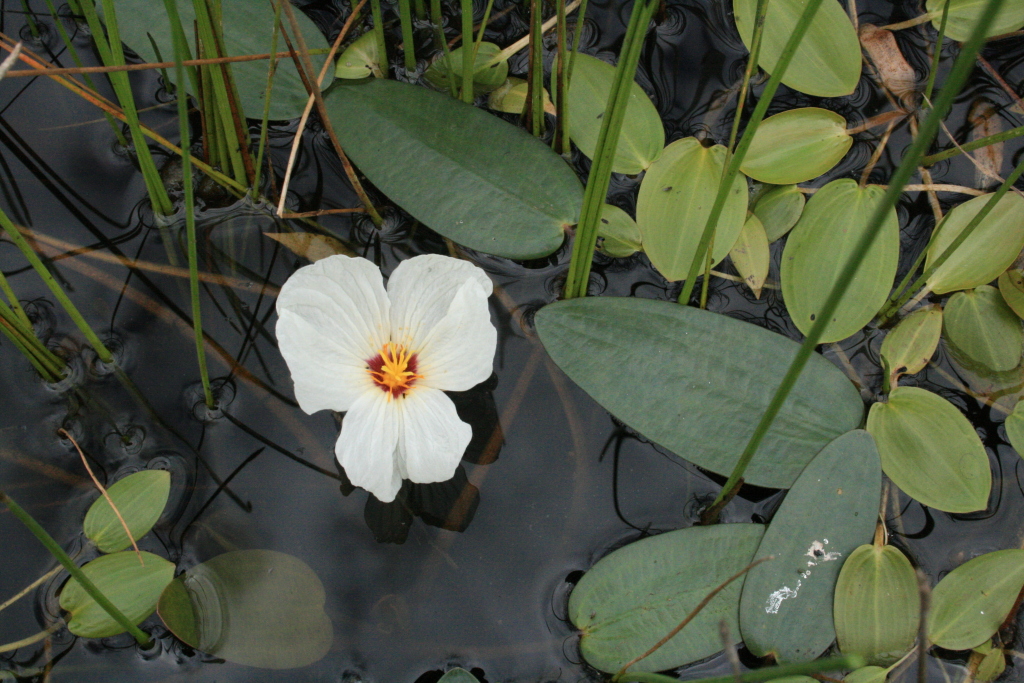Ottelia ovalifolia subsp. ovalifolia
Leaves with petiole up to 60(–120) cm long, reddish, winged basally, terete to plano-convex in section distally, glabrous; lamina elliptic to ovate, 2–16 cm long, floating at water surface, mid-green, 5–7 longitudinal veins and numerous cross-connecting veins, more prominent on lower surface than on upper; margin entire; apex obtuse; juvenile leaves submerged and strap-like. Flowers sessile within green to purplish, 2-lobed, united floral bracts, of two kinds (see notes below). Chasmogamous flowers are emergent or floating, open, showy, c. 5 cm across; stalks up to 38 cm long; outer perianth segments green, 17–25 mm long; inner perianth segments white, with dark red-purple at base, c. 30 mm long; stamens 6–12, in 3 groups of 4 or variously reduced; styles 6–9, about as long as anthers. Cleistogamous flowers submerged on shorter stalks, unopen, with shorter perianth. Seeds 2.5–3 mm long.
LoM, MuM, Wim, GleP, VVP, VRiv, MSB, RobP, MuF, GipP, OtP, WaP, Gold, CVU, GGr, DunT, NIS, EGL, EGU, WPro, HSF, HNF, OtR, Strz. Also WA, NT, SA, Qld, NSW, ACT. Except for the far north-west and alps, rather common in dams, lakes, billabongs and slow-moving rivers almost throughout the State.
Two kinds of flowers are present. Chasmogamous flowers are emergent or floating, large, open and showy, whereas cleistogamous flowers remain submerged on shorter stalks, within the united floral bracts, and self-pollination occurs inside the unopen flower (see Aston 1973 for further details). The identification of young plants is difficult because juvenile leaves are thin and strap-like, similar to those of Vallisneria but that genus has a more obtuse leaf-apex (with very fine, minute teeth) and a stoloniferous habit. The adult floating leaves are similar to those of Aponogeton distachyos, although the latter has a tuber-like rhizome buried in the substrate and the flowers arranged in a simple or divided spike.
 Spinning
Spinning


